Garmin GT41-THP Handleiding
Garmin
Niet gecategoriseerd
GT41-THP
Bekijk gratis de handleiding van Garmin GT41-THP (8 pagina’s), behorend tot de categorie Niet gecategoriseerd. Deze gids werd als nuttig beoordeeld door 5 mensen en kreeg gemiddeld 3.5 sterren uit 3 reviews. Heb je een vraag over Garmin GT41-THP of wil je andere gebruikers van dit product iets vragen? Stel een vraag
Pagina 1/8

Thru-Hull Transducer
Installation Instructions
Important Safety Information
WARNING
See the guide in the Important Safety and Product Information
product box for product warnings and other important
information.
The device must be installed with at least one of the included
anti-rotation bolts. Failure to do so could result in the device
rotating while the boat is moving and could cause damage to
your vessel.
You are responsible for the safe and prudent operation of your
vessel. Sonar is a tool that enhances your awareness of the
water beneath your boat. It does not relieve you of the
responsibility of observing the water around your boat as you
navigate.
CAUTION
Failure to install and maintain this equipment in accordance with
these instructions could result in damage or injury.
Always wear safety goggles, ear protection, and a dust mask
when drilling, cutting, or sanding.
NOTICE
When drilling or cutting, always check what is on the opposite
side of the surface.
This equipment should be installed by a qualified marine
installer.
To obtain the best performance and to avoid damage to your
boat, you must install the Garmin® transducer according to these
instructions.
Read all installation instructions before proceeding with the
installation. If you experience difficulty during the installation,
contact Garmin Product Support.
Registering Your Device
Help us better support you by completing our online registration
today.
• Go to .http://my.garmin.com
• Keep the original sales receipt, or a photocopy, in a safe
place.
Contacting Garmin Product Support
• Go to for in-country support www.garmin.com/support
information.
• In the USA, call 913-397-8200 or 1-800-800-1020.
• In the UK, call 0808 238 0000.
• In Europe, call +44 (0) 870 850 1241.
Loading the New Software on a Memory Card
You must copy the software update to a memory card.
1Insert a memory card into the card slot on the computer.
2Go to .www.garmin.com/support/software/marine.html
3Select next to “Garmin Marine Network with SD Download
card”.
4Read and agree to the terms.
5Select .Download
6If necessary, select or save and open the file.Run
7If necessary, select the drive associated with the memory
card, and select > .Next Finish
Updating the Device Software
Before you can update the software, you must obtain a
software-update memory card or load the latest software onto a
memory card.
1Turn on the chartplotter.
2After the home screen appears, insert the memory card into
the card slot.
NOTE: In order for the software update instructions to
appear, the device must be fully booted before the card is
inserted.
3Follow the on-screen instructions.
4Wait several minutes while the software update process
completes.
The device returns to normal operation after the software
update process is complete.
5Remove the memory card.
NOTE: If the memory card is removed before the device
restarts fully, the software update is not complete.
Tools Needed
• Drill
• 3 mm bit (1/8 in.)
• 9 mm bit (3/8 in.)
• 13 mm bit (1/2 in.)
• 25 mm spade bit (1 in.) (fiberglass hull)
• 29 mm spade bit (1 1/8 in.) (fiberglass hull)
• 32 mm spade bit (11/4 in.) (fiberglass hull)
• 32 mm hole saw (1 1/4
in.) (metal hull)
• Bandsaw or table saw
• Slip-joint pliers or crescent wrench
• Masking tape
• Marine sealant
• Epoxy or exposed core sealant (cored fiberglass hull)
About the Transducer
The transducer transmits and receives sound waves through the
water, and relays sound-wave information to your Garmin sonar
device.
Mounting Location Considerations
• On outboard and sterndrive vessels
À, the transducer should
be mounted in front of and close to the engine or engines.
• On inboard vessels Á, the transducer should be mounted in
front of and far away from the engine propeller and shaft.
• On step-hull vessels Â, the transducer should be mounted in
front of the first step.
May 2015 Printed in Taiwan 190-01774-02_0B

• On full-keel vessels Ã, the transducer should be mounted at
a slight angle that aims at the bow, not parallel to the
centerline.
• On fin-keel vessels Ä, the transducer should be mounted
from 25 cm to 75 cm (from 10 to 30 in.) in front of the keel
and a maximum of 10 cm (4 in.) to the side of the centerline.
• On vessels with displacement hulls Å, the transducer should
be mounted approximately 1/3 aft of the waterline length of
the vessel from the bow, and from 150 to 300 mm (from 6 to
12 in.) to the side of the centerline.
• The transducer should be mounted parallel to the bow-stern
axis of your vessel.
• The transducer should not be mounted behind strakes, struts,
fittings, water intake or discharge ports, or anything that
creates air bubbles or causes the water to become turbulent.
The transducer must be in clean (non-turbulent) water for
optimal performance.
• The transducer should not be mounted in a location where it
might be jarred when launching, hauling, or storing.
• On single-drive boats, the transducer must not be mounted in
the path of the propeller.
The transducer can cause cavitation that can degrade the
performance of the boat and damage the propeller.
• On twin-drive boats, the transducer should be mounted
between the drives, if possible.
Fairing Block Angle Cut
A fairing block positions your transducer parallel to the water line
for increased sonar accuracy. You must measure the deadrise
angle of your boat hull to determine if a fairing block is
necessary to mount the transducer. If the deadrise angle of your
mounting location exceeds 5°, you should use a fairing block to
mount the transducer.
Deadrise Angle
Deadrise is the angle formed between a horizontal line and a
boat hull at a single point. You can measure the deadrise angle
with an angle finder, a protractor, or a digital level. You can also
ask your boat manufacturer for the deadrise angle of the specific
point on your boat hull.
NOTE: A boat may have several deadrise angles depending on
the shape of the hull. Measure the deadrise angle only at the
location where you plan to install the transducer.
Cutting the Fairing Block
CAUTION
Always wear safety goggles, ear protection, and a dust mask
when drilling, cutting, or sanding.
1Using wood screws, attach the fairing block to a piece of
wood.
The wood becomes a cutting guide for the fairing block.
2Measure the deadrise angle of the hull at the mounting
location.
3Tilt your table saw blade À to match the deadrise angle and
secure the cutting fence.
4Position the fairing block on the table so the cutting guide
rests against the fence Á and the angle matches the angle of
the mounting location .
5Adjust the cutting fence to ensure the fairing block has a
minimum thickness of 13 mm (1/2 in.).
NOTE: The maximum cutting angle of the fairing block is 25°.
6Cut the fairing block.
7Using a rasp or power tool, shape the fairing block to the hull
as precisely as possible.
8Use the remaining section of the fairing block as the backing
block inside the hull.
Cored Fiberglass Boat Hull Installation
Instructions
Thru-Hull Transducer in a Cored Hull with a Fairing
Block
If the deadrise angle of your mounting location exceeds 5°, you
must use a fairing block to mount the device.
Drilling the Transducer Stem Hole and the Anti-Rotation
Bolt Holes in a Cored Fiberglass Hull
Before you can drill holes for the anti-rotation bolts, you must
drill the hole for the transducer stem (Drilling the Transducer
Stem Hole and the Anti-Rotation Bolt Holes in a Cored
Fiberglass Hull Cutting the ) and you must cut the fairing block (
Fairing Block).
WARNING
The device must be installed with at least one of the included
anti-rotation bolts. Failure to do so could result in the device
rotating while the boat is moving and could cause damage to
your vessel.
The core must be cut and sealed carefully to protect against
water seepage.
1Select a mounting location without surface irregularities or
obstructions.
2Using the template, mark the location of the stem hole and
anti-rotation bolts.
3Drill a 3 mm (1/8 in.) pilot hole through the template and hull
at the stem hole location.
The hole must be perpendicular to the water surface.
4Place masking tape over the pilot hole and surrounding area
outside the hull to prevent damage to the fiberglass.
5Using a 25 mm (1 in.) bit at the stem hole location, drill from
outside the hull through the outer skin
À, inner skin Á, and
the core Â.
2

The hole must be perpendicular to the water surface.
6Sand and clean the inner skin, core, and outer skin around
the hole.
7Seal the exposed inner core with epoxy Ã, and allow the
epoxy to set thoroughly.
8While holding a drill with a 9 mm (3/8 in.) bit plumb, drill the
anti-rotation bolt holes through the hull from outside the hull.
The holes must be perpendicular to the water surface.
9Sand and clean the area around the holes.
Applying Marine Sealant to a Thru-Hull Transducer
You must apply marine sealant to the transducer to ensure a
tight, waterproof seal between the fairing block and the hull. Do
not apply sealant directly to the stem or anti-rotation bolts.
Apply marine sealant À around the base of the stem and
anti-rotation bolts on the transducer.
Installing the Transducer with a Fairing Block
It is recommended that two installers complete these
instructions, with one positioned outside the boat and one inside
the boat.
NOTE: When installing the transducer in a cored fiberglass hull,
avoid over-tightening the nuts to prevent damaging the hull.
1If the anti-rotation bolts À are installed on your transducer,
remove them.
2Apply marine sealant at the base of the anti-rotation bolts and
transducer stem Á.
3Seat the transducer housing firmly within the fairing block
Â
recess.
4Apply marine sealant to the face of the fairing block that must
contact the hull.
5Apply marine sealant to the face of the backing block
à that
must contact the inner hull.
6From outside the hull, insert the transducer cable
Ä and
transducer stem through the mounting hole.
7From inside the hull, slide the backing block onto the
transducer stem and seat it firmly against the inner hull.
The fairing and transducer must be parallel to the keel.
8From inside the hull, apply the included anti-seize compound
to the exposed transducer stem and anti-rotation bolts.
9From inside the hull, use slip-joint pliers or a crescent wrench
to secure the backing block to the transducer stem with the
included 35 mm hull nut Å, rubber 24 mm washer, and nylon
26 mm washer Æ.
Do not over-tighten the hull nut.
10From inside the hull, use slip-joint pliers or a crescent wrench
to secure the backing block to the anti-rotation bolts with the
included M8 nuts Ç and 8 mm washers È.
Do not over-tighten the M8 nuts.
11Before the sealant hardens, remove all excess sealant on the
outside of the fairing block and exterior hull to ensure smooth
water flow over the transducer.
Thru-Hull Transducer in a Cored Hull without a
Fairing Block
If the deadrise angle of your mounting location does not exceed
5°, you can mount the device without a fairing block.
Drilling the Transducer Stem and Anti-Rotation Bolt Holes
Using a Template
WARNING
The device must be installed with at least one of the included
anti-rotation bolts. Failure to do so could result in the device
rotating while the boat is moving and could cause damage to
your vessel.
You should follow these instructions if you are not using a fairing
block or isolator plate to mount your transducer.
1Trim the included transducer template.
2Select a mounting location without surface irregularities or
obstructions.
3Using the template, mark the location of the stem hole and
anti-rotation bolts.
4While holding a 25 mm (1 in.) spade bit plumb, drill the
transducer stem hole from outside the hull.
The hole must be perpendicular to the water surface.
5While holding a drill with an 9 mm (3/8 in.) bit plumb, drill the
anti-rotation bolt holes from outside the hull.
The holes must be perpendicular to the water surface.
6Sand and clean the inner skin, core, and outer skin around
the holes.
Applying Marine Sealant to a Thru-Hull Transducer
You must apply marine sealant to the transducer to ensure a
tight, waterproof seal between the fairing block and the hull. Do
not apply sealant directly to the stem or anti-rotation bolts.
Apply marine sealant À around the base of the stem and
anti-rotation bolts on the transducer.
3
Product specificaties
| Merk: | Garmin |
| Categorie: | Niet gecategoriseerd |
| Model: | GT41-THP |
Heb je hulp nodig?
Als je hulp nodig hebt met Garmin GT41-THP stel dan hieronder een vraag en andere gebruikers zullen je antwoorden
Handleiding Niet gecategoriseerd Garmin
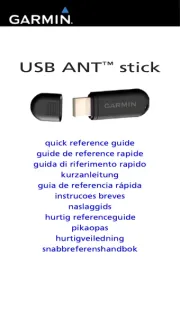
7 Mei 2025
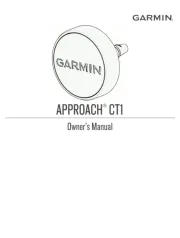
25 Februari 2025

9 Januari 2025

9 Januari 2025

14 December 2024

13 November 2024

2 Oktober 2024

23 Juli 2024

25 Juni 2024

9 Juli 2023
Handleiding Niet gecategoriseerd
- Hortus
- TC Helicon
- Kaiser Fototechnik
- Kayoba
- VigilLink
- BabyGO
- Fosi Audio
- CFH
- Brandt
- Zoom
- Edge
- Sanli
- ICC
- Ontel
- Anthro
Nieuwste handleidingen voor Niet gecategoriseerd
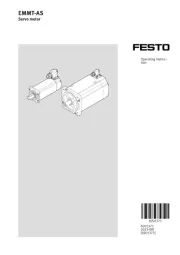
1 Augustus 2025
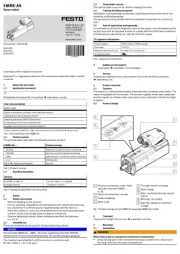
1 Augustus 2025
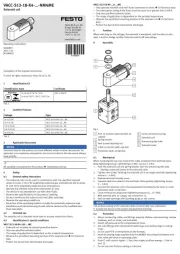
1 Augustus 2025
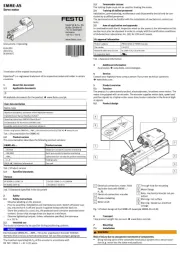
1 Augustus 2025
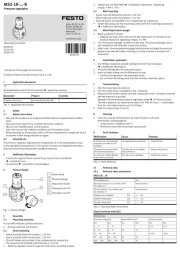
1 Augustus 2025

1 Augustus 2025
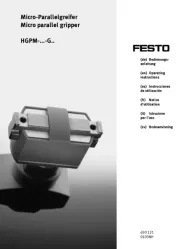
1 Augustus 2025
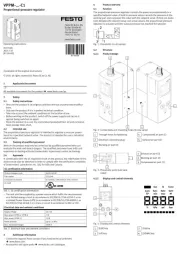
1 Augustus 2025
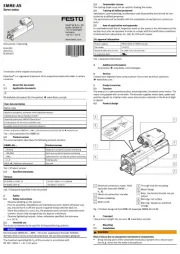
1 Augustus 2025
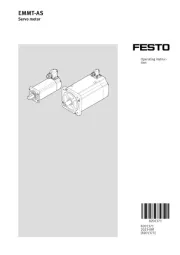
1 Augustus 2025